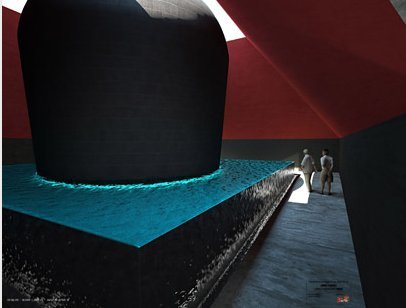James Turrel
dal 12/2/2008 al 12/2/2008
Segnalato da
12/2/2008
James Turrel
Fundacion NMAC, Cadiz
Stupa. A site specifi project. The historical importance of Turrell's work resides in his skill at examining the way we experience light, and his ability to isolate these features and present them to the viewer in his artworks. The artist describes himself as a sculptor of light, isolating certain features of it to create an objectless art that appears to be made of solid light.

The historical importance of Turrell’s work resides in his skill at examining the way we experience light, and his ability to isolate these features and present them to the viewer in his artworks. Rather than conveying what he himself has discovered, he wants viewers to discover it for themselves, through their own experience. With his pieces, the artist helps us to understand the various different aspects of light, solar energy, and how the retina reacts to light changes.
The artist describes himself as a sculptor of light, isolating certain features of it to create an objectless art that appears to be made of solid light. The results are entirely subjective, and depend on each visitor’s individual experience of the piece. The extraordinary thing about Turrell’s work is that it allows visitors to decide where to place themselves in the space around them. There is no image, and no specific focal point.
Turrell’s most important artwork is the Roden Crater Project, in Arizona. For three decades, he has been turning this extinct volcano into a laboratory. Parallel to this project, Turrell has also worked on other architectural projects, such as Stupa, the piece designed for the NMAC Foundation. This extremely complex piece is part of the artist’s series, Skyspaces, many of which are derived from the studies he has carried out at Roden Crater. Stupa is an underground installation, invisible from the outside, in which spectators walk through a short tunnel into a pyramid containing the three elements: earth, water and air. Inside the pyramid is a stone stupa, surrounded by a pool full of water. Stupas are the round domes typical of Buddhist architecture. Their shape and position have the effect of bringing the viewer closer to the cosmos. Entering the stupa through a passageway leading into a room full of light and open to the sky, visitors can sit and watch the changing light and the experience the ambivalence of the limits of our perception, where it becomes hard to tell where light ends, and structure begins. In this, as in most of Turrell’s other projects, light not only has texture, it also acquires substance and location.
The NMAC Foundation is located in the interior grounds of the Dehesa Montenmedio in the Cadiz municipality of Vejer de la Frontera. The NMAC Foundation was created as a point of interaction between its social, cultural and territorial context. Following the current model for a relationship based centre, the NMAC Foundation project was conceived as a mediating museum, committed to supporting contemporary artists on specific projects which promote social dialogue and understanding through art.
Situated in a rural setting, far from urban centres, the Foundation invites artists from all corners of the world to undertake site-specific projects in the form of installations, sculptures, photography, video-painting, performances and architectural projects within nature. Each of the works maintains a close relationship with its surroundings as the visitor can discover over his route through the Mediterranean forest. To date more than 40 artists have undertaken projects in NMAC, of which 20 projects represent a permanent part of this collection, a facility which is open to the general public.
The NMAC Foundation
Dehesa Montenmedio Vejer de la Frontera Cadiz Spain



